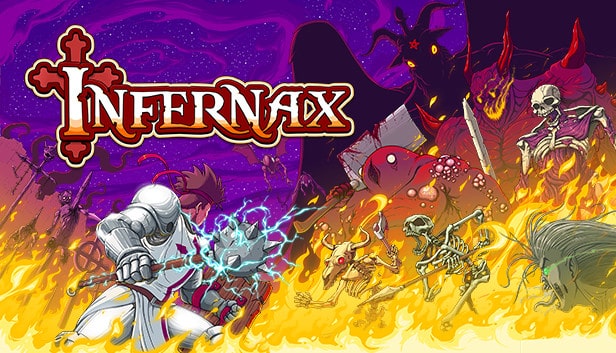Paying homage to the classics is a staple in most indie games, and though that is absolutely true when it comes to Infernax, the game goes above and beyond to the point that players in the know will have a serious case of deja vu. In a good way, mind you. With that being said, the game is more than just a reskin of classic NES games, it also pushes the needle forward when it comes to difficulty and player choice.
Infernax is a metroidvania game that is heavily inspired by games like Castlevania II: Simon’s Quest. Players take control of a duke of Upel, whose lands have been plagued with evil over the course of a couple of years. At the start of the game, the player decides the name of their character. Naturally, I named my character after Dante, the first name that comes to mind when I think of someone having returned from the Crusades and having a worse off time because of demons.
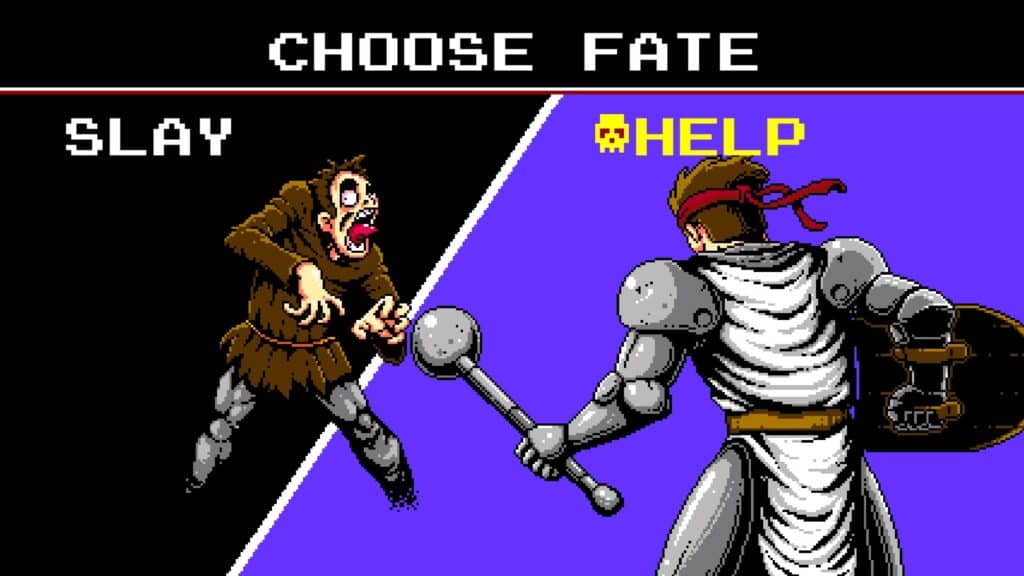
The game does a really good job in terms of balance, Dante doesn’t move too fast as to ‘outrun’ the screen, and enemies don’t clutter the screen with all sorts of attacks. I have noticed two things about movement though. There is a fraction of a second delay whenever the character jumps and his walk speed is slightly slower than other 2-D characters. For the former, I suppose it’s due to the kneeling animation he does before actually jumping. As for the latter, the reason why he moves the way he does is because he has a shield up when walking, which can also attribute to why there is an ever so slight delay in his jumps.
The shield is there to deflect most incoming projectiles, but I found it to be somewhat inconsistent when moving. That’s not to say that it’s worthless or anything. The darn thing has saved me from taking critical damage. It’s just that it’s most effective when standing still.
Later on in the game, the player gets access to new moves that also serve as movement tech. This is important because like all metroidvanias, you open up more parts of the map through the use of gadgets and special moves. What sets Infernax apart from others is that the game doesn’t go all-in when it comes to collectibles. Most of the equipment in the game can be bought in stores. With only the legendary gear only being acquirable after learning all the game’s movement tech.
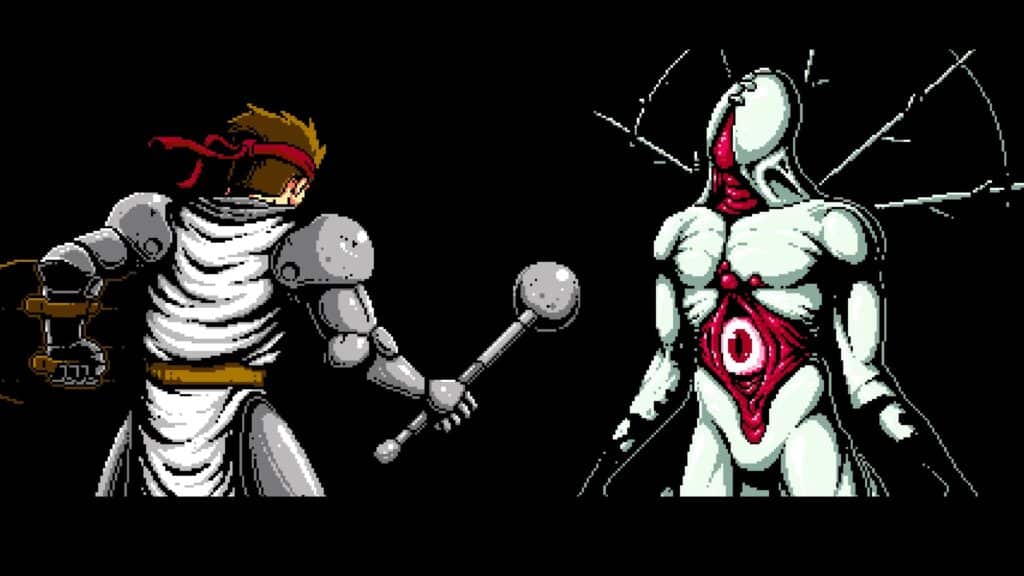
The main goal of the game is to eliminate a demon force that’s plaguing the lands of Upel. To do this, the player must break the seals barring the entry to the source of evil. The seals are hidden in five castles spread throughout the map, and they are guarded by a greater demon. Each castle introduces a new challenge that the player must overcome, mostly in the form of new platforming challenges. There is also a day and night cycle reminiscent of Simon’s Quest, but far less intrusive. I’d say the pacing is just right, albeit unremarkable.
Throughout the journey, the player can partake in side quests given to them by various villagers. Surprisingly, it’s not all requests to save someone or to avenge fallen family members though. Some mean-spirited villagers will ask the player to commit acts of evil. This goes along with the game’s emphasis on making choices. It’s one of the game’s most prominent features. Eventually, all choices cultivate to one of a number of endings. This gives the game more replay value than just doing it again for the sake of doing it all over again.
Moreover, it’s not all cut and dry when it comes to the choices either. Some of my notable moments came from making a seemingly noble decision, only for it to backfire spectacularly. I’ve lost progress trying to preserve my good reputation, and it was worth the hassle.
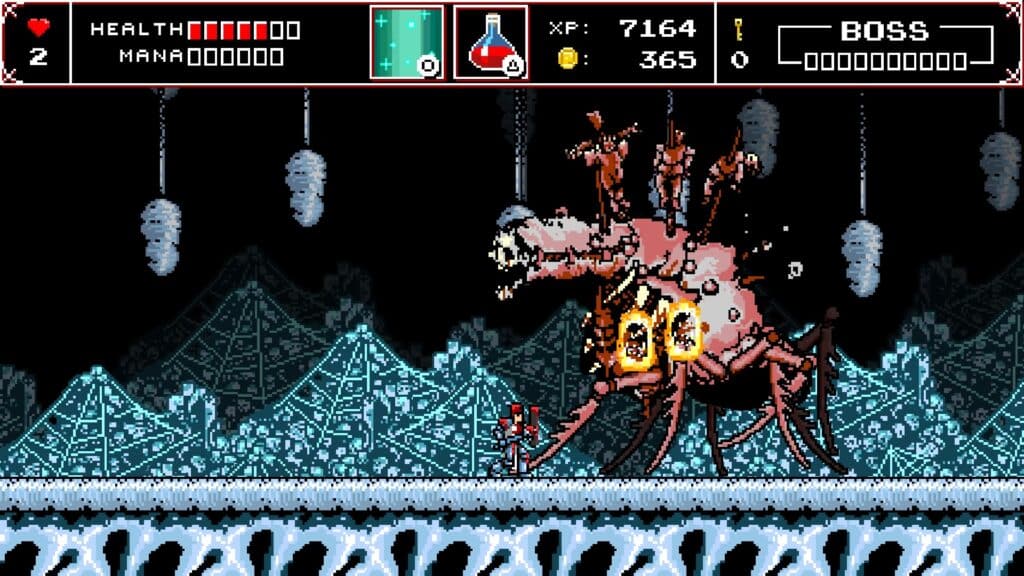
The enemies in the game are archetypes found in Castlevania games. Well minus the Medula heads, though the game’s creepy floating eye monster is a close enough equivalent. These annoying creatures have been the cause of more than a few pit deaths. It doesn’t help that the knockback is similar to that of Ninja Gaiden on the NES, but it is more amusing than frustrating… most of the time.
The boss encounters, while I was expecting to be soul-like in difficulty, were actually very fun. The bosses have 2-3 attacks that cycle as needed plus an additional movement trick specific to that boss. What I really like about the boss fights is that the moves are clearly telegraphed. I know I played an encounter poorly when I get killed by something that has a clear pattern. I can’t blame the boss for that.
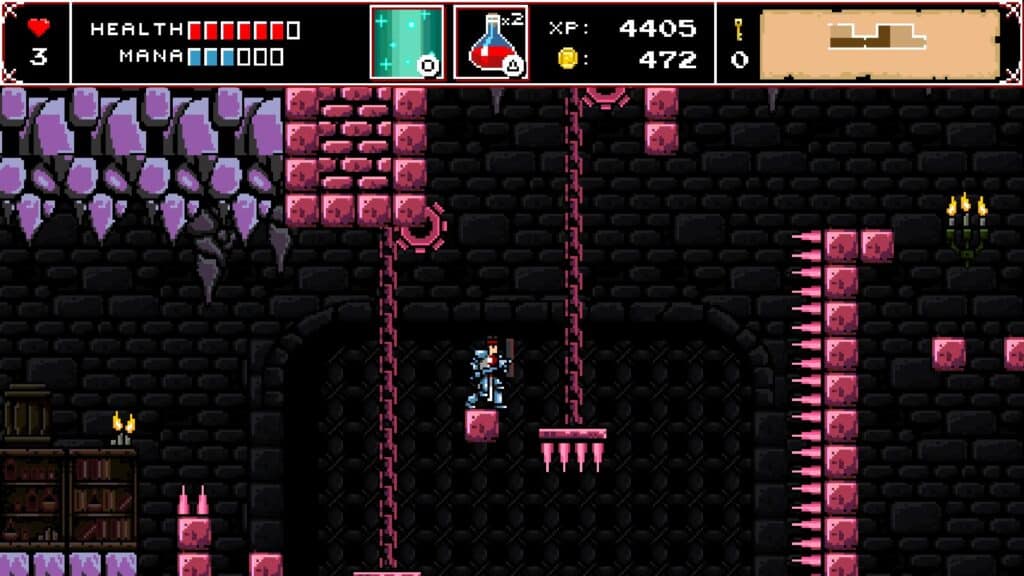
The game’s pixel art aesthetic is a big draw for old-school fans. Though I do like to say that even though the game might look like something from the NES, its graphic nature is not recommended for young audiences. That goes double for moments it goes into body horror, and such. Regardless of how you feel about the content, just know that the pixel art cutscenes are beautifully done in this game.
Infernax utilizes some of the most energy packed chiptune music I’ve heard outside of the NES. There’s never a dull when you’re outside the safety of the game’s towns. The synthetic BGM fits perfectly with the kind of game that it is. And it’s even worth noting that if you happen to unlock the secret endgame dungeon, expect Doom-like music.
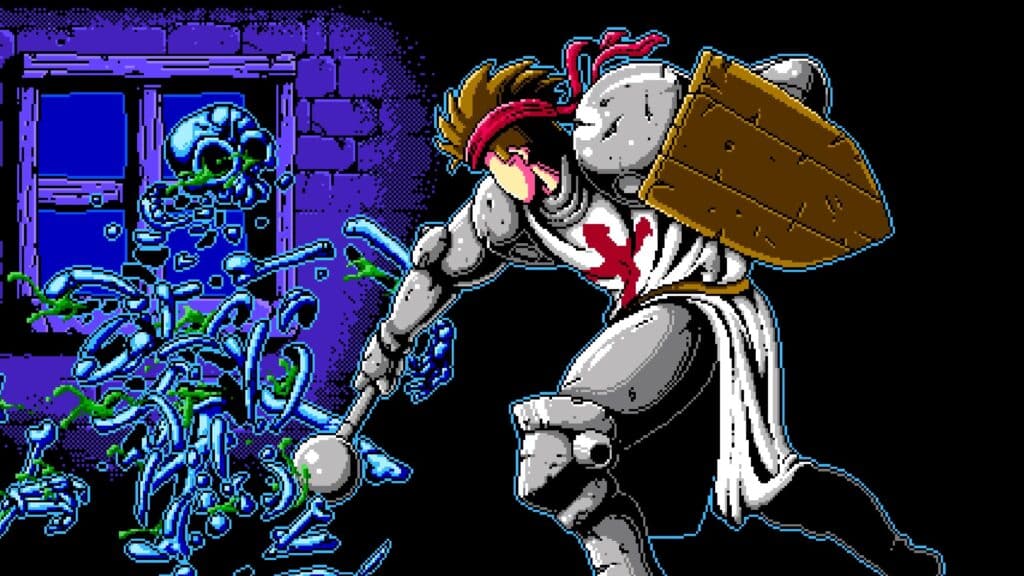
I mentioned that Infernax is heavily inspired by Simon’s Quest. If you look closely enough, you’ll find yourself walking into familiar situations from the series, with a twist. Without giving too much away, I can confidently say that I’ve come across a couple of Easter eggs referencing the tornado from Simon’s Quest and wall chicken. Both are not beneficial in any way besides trophy unlocks. But stumbling across them is a major highlight of my playthrough of the game.
The only thing that frustrated me in the game is the fact that it can get cryptic at times. It’s definitely one of those ‘where do I go?’ kind of games. Father Henry tells you where to go, but he doesn’t tell you how. Furthermore, villagers may have mission-critical information, but since they’re random NPC’s, whatever they say can easily be disregarded as a waste of time. It’s not all the game’s fault, I’m just rushing to find the next castle and I happen to forget that villagers offer clues to progress. (Thanks Simon’s Quest.)
Other than that, I encountered one game-breaking bug that required me to restart the application. It was a nasty one, as it prevented me from talking to NPCs and entering the door. I feared that my entire game was broken. Thankfully, it was temporary.
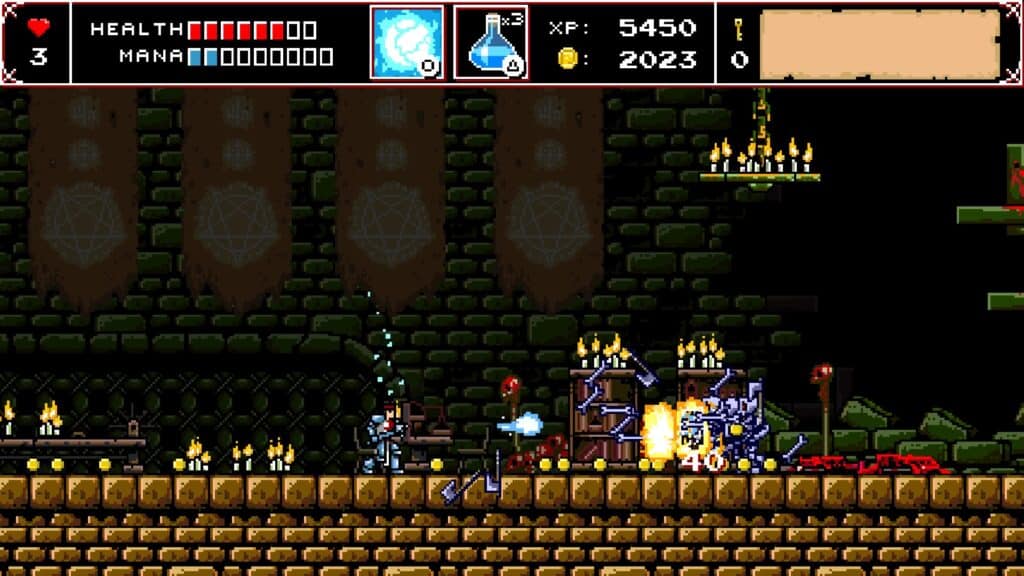
Infernax walks a fine line between honoring the classics while adding its own unique stamp to the genre, and I am glad that it did so exceeding well. The game wears its inspiration proudly on its sleeve. And as a game all about stopping a demonic invasion, it is all the better for it. On a final note, Infernax doesn’t take a hard stance on difficulty as it has a classic mode and a casual mode. It takes player choice to heart, and does all that is reasonable to accommodate player preference without butchering the experience. This is one game that deserves a place in your classics library.



